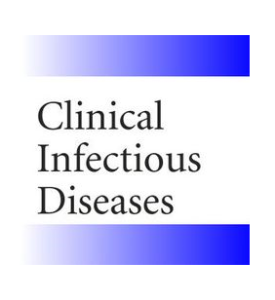 “The aim of this study was to compare the micro-morphological features of two different non-drug Cannabis sativa L. biotypes (Chinese accession G-309 and one fibrante variety) and to evaluate the phytochemical profile as well as some biological properties of the essential oils (EOs) obtained by hydrodistillation of dried flowering tops. After a micro-morphological evaluation by scanning electron microscopy, the phytochemical composition was analysed by GC-FID and GC-MS analyses.
“The aim of this study was to compare the micro-morphological features of two different non-drug Cannabis sativa L. biotypes (Chinese accession G-309 and one fibrante variety) and to evaluate the phytochemical profile as well as some biological properties of the essential oils (EOs) obtained by hydrodistillation of dried flowering tops. After a micro-morphological evaluation by scanning electron microscopy, the phytochemical composition was analysed by GC-FID and GC-MS analyses.
Antioxidant and anti-acetylcholinesterase properties were investigated by several in vitro cell-free assays, while neuroactive effects were evaluated on mouse cortical neuronal as well as human iPS cell-derived central nervous system cells grown on MEA chips. Both EOs showed strong antioxidant properties mainly attributable to the high content of hydroxylated compounds as well as significant anti-acetylcholinesterase activities (IC50 74.64 and 57.31 μg/ml for Chinese accession and fibrante variety, respectively).
Furthermore, they showed a concentration-dependent inhibition of spontaneous electrical activity of human and mouse neuronal networks, with the fibrante variety, which showed the best activity (MFR, IC50 0.71 and 10.60 μg/ml, respectively). The observed biological activities could be due to a synergic effect between terpenes and phytocannabinoids, although in vivo studies, which clarify the molecular mechanism, are still lacking.”

 “Despite the increasing prevalence and acceptance of the medical
“Despite the increasing prevalence and acceptance of the medical  “Cannabis sativa or Indian hemp (subfamily Cannaboideae of family Moraceae) is an annual herbaceous plant, native to central and western Asia, cultivated for medicinal properties and for hemp, which is a natural textile fiber. The plant contains over 400 chemical compounds, of which approximately 80 biologically active chemical molecules. The most important cannabis compounds are cannabinoids formed by a terpene combined with resorcinol, or, according to a different nomenclature, by a benzopyranic ring system. There are about sixty cannabinoids, of which the most important psychoactive compound is tetrahydrocannabinol (TCH), in particular the isomer delta (Δ9-THC). Other identified compounds are
“Cannabis sativa or Indian hemp (subfamily Cannaboideae of family Moraceae) is an annual herbaceous plant, native to central and western Asia, cultivated for medicinal properties and for hemp, which is a natural textile fiber. The plant contains over 400 chemical compounds, of which approximately 80 biologically active chemical molecules. The most important cannabis compounds are cannabinoids formed by a terpene combined with resorcinol, or, according to a different nomenclature, by a benzopyranic ring system. There are about sixty cannabinoids, of which the most important psychoactive compound is tetrahydrocannabinol (TCH), in particular the isomer delta (Δ9-THC). Other identified compounds are  “HIV infection leads to blood-brain barrier (BBB) dysfunction that does not resolve despite viral suppression on antiretroviral therapy and is associated with adverse clinical outcomes.
“HIV infection leads to blood-brain barrier (BBB) dysfunction that does not resolve despite viral suppression on antiretroviral therapy and is associated with adverse clinical outcomes. “Both environmental and genetic factors are known to contribute to the development of anorexia nervosa (AN), but the exact etiology remains poorly understood.
“Both environmental and genetic factors are known to contribute to the development of anorexia nervosa (AN), but the exact etiology remains poorly understood. “Endocannabinoid system activity contributes to the homeostatic defense against aging and thus may counteract the progression of brain aging.
“Endocannabinoid system activity contributes to the homeostatic defense against aging and thus may counteract the progression of brain aging. “Colorectal cancer (CRC) has a high mortality rate and is one of the most difficult diseases to manage due to tumour resistance and metastasis. The treatment of choice for CRC is reliant on the phase and time of diagnosis. Despite several conventional treatments available to treat CRC (surgical excision, chemo-, radiation- and immune-therapy), resistance is a major challenge, especially if it has metastasized. Additionally, these treatments often cause unwanted adverse side effects and so it remains imperative to investigate, alternative combination therapies.
“Colorectal cancer (CRC) has a high mortality rate and is one of the most difficult diseases to manage due to tumour resistance and metastasis. The treatment of choice for CRC is reliant on the phase and time of diagnosis. Despite several conventional treatments available to treat CRC (surgical excision, chemo-, radiation- and immune-therapy), resistance is a major challenge, especially if it has metastasized. Additionally, these treatments often cause unwanted adverse side effects and so it remains imperative to investigate, alternative combination therapies. “Cannabis sativa produces hundreds of phytocannabinoids and terpenes.
“Cannabis sativa produces hundreds of phytocannabinoids and terpenes. “Exemestane is one of the aromatase inhibitors (AI) used as first line treatment for estrogen-receptor positive breast cancer in post-menopausal women. Exemestane acts by inhibiting aromatase, the enzyme responsible for the conversion of androgens to estrogens and also by promoting apoptosis of breast cancer cells. Nevertheless, despite its therapeutic success, this AI, after prolonged treatment, can induce acquired resistance, which causes tumor relapse. Therefore, it is important to find new strategies to overcome resistance in order to improve breast cancer treatment.
“Exemestane is one of the aromatase inhibitors (AI) used as first line treatment for estrogen-receptor positive breast cancer in post-menopausal women. Exemestane acts by inhibiting aromatase, the enzyme responsible for the conversion of androgens to estrogens and also by promoting apoptosis of breast cancer cells. Nevertheless, despite its therapeutic success, this AI, after prolonged treatment, can induce acquired resistance, which causes tumor relapse. Therefore, it is important to find new strategies to overcome resistance in order to improve breast cancer treatment.